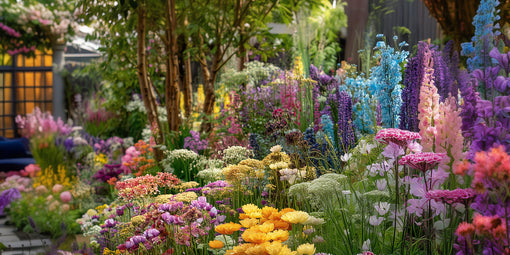
- Article published at:
Drawer menu

Carnations are known to have a bit of a bad reputation of being an “old fashioned” flower or a flower only suitable for funerals. But lately the carnation is making a comeback and we can definitely see why. Scroll down to find out why the carnation is the floral designers new best friend.
The carnation dates back more than 2000 years and it’s not surprising that they are deeply embedded in symbolism and flower meanings. Carnations originates in the Mediterranean region and is one of the oldest cultivated flowers and has been known since Greek and Roman times.
The flower got its scientific name from the Greek botanist Theophrastus who named it dianthus, a combination of the Greek words dios, which means divine or God and Anthos, the word for flower.
In the Victorian age, the popularity of the carnation reached its peak, although it never became quite as popular as the violet. Still, it was one of the Victorians favourite flowers.

Carnations comes in a lot of different colours and shades, even bicolour. The most popular colours are white, pink, red, orange, purple, yellow and lavender. In short, all colours under the sun apart from blue and black.
When the carnation was first discovered the most common colour was pink and shades of pink so it’s no surprise the general symbolism of carnations are ‘devotion’.
Nowadays carnations are an expression of love and gratitude and are often given to mothers on Mother’s Day. Each colour also have their own meaning.
The original pink carnation that was discovered first symbolise gratitude and is the most common flower send to mothers on Mother’s Day.
Some people associate white carnations with funerals but in fact, white carnations mean purity and good luck. A perfect flower to send someone that’s starting a new job or for the newly engaged!
Yellow carnations are very pretty but for some reason they represent disappointment and rejection. Therefore they are best to send someone you need to apologise to or even as a sympathy flower.
Red carnations are lovely fluffy red flowers that looks fantastic in Christmas arrangements and in garlands running down the middle of the dining table.
They also work really well as a alternative for roses on Valentine’s Day for those few who prefer something else then premium roses from their loved ones.

The best time to plant carnations is during a transition season like spring or autumn when it’s not too hot and not too cold. Carnations needs at least four hours of sunlight per day so think about that when choosing where to plant them.
They also like a well-drained soil, not too soggy and a mix of compost to ensure the soil is extra fertile.
Once you’ve chosen a sunny spot in the garden, plant your carnation seeds in the soil with about 30 cm apart. Usually carnations start growing straight away and you should see something at the surface of the soil within a few days.
Make sure the plan get a lot of water in the first few weeks of growing so they can establish their root system. Once your carnation is blooming, you’ll need to prune it to promote new growth.

These are the most common type of carnations that has one large fluffy bloom on a long beautiful flower stem.
Spray carnations are stems with cluster-like mini stems that resembles small posys and look really nice in vase arrangements.
Dwarf carnations are usually the type you get in gardens and looks really lovely in hanging baskets.
Looking for flowers with same day delivery? We at LOV Flowers are happy to announce we now deliver same day within London! Simply place your order before 1pm Monday to Friday. If you need your flowers sent anywhere else in the UK, then choose our free next day flower delivery.
Looking for flower delivery with carnations?